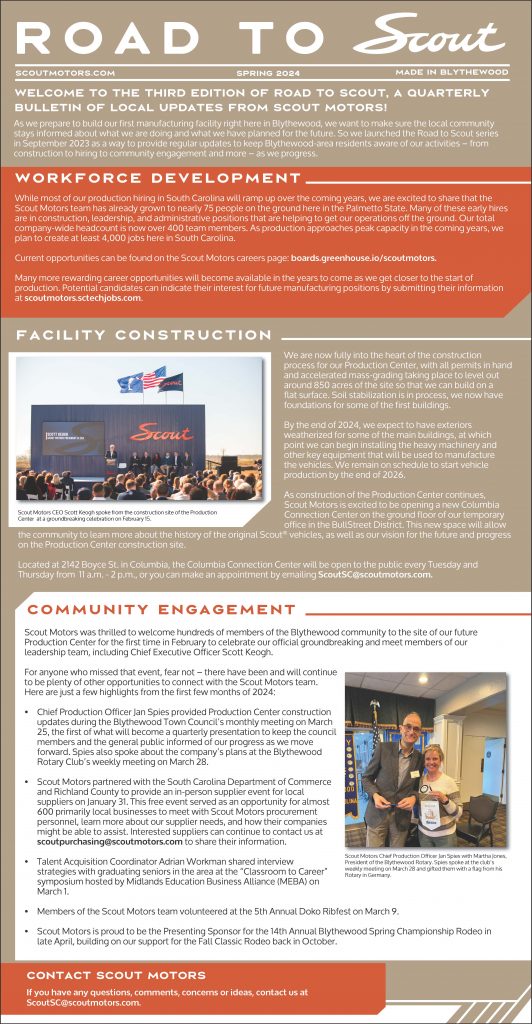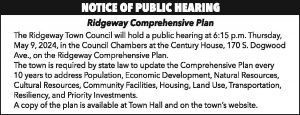BLYTHEWOOD – Continuing to rehash Mayor J. Michael Ross’s concern that the Town’s sign ordinance and the Town Center District zoning is too restrictive, some Council members disagreed saying the sign ordinance should not be scrapped or even tweaked very much. The ordinance was passed in 2009 to require all signs in the town to conform by the year 2016 (high-rise interstate signs don’t have to conform until 2020).
Councilman Bob Massa said he felt the Council should stick with the 2016 ordinance. While some signs are slightly out of conformity because of size, he suggested allowing a 5 percent overage.
“That would bring a lot of these signs into compliance. Having previously served on the BZA,” Massa said, “when anything pertaining to signs came before us, we held them to the 2016 date. There was a lot of public involvement. The weakness in the system has probably been allowing the Town Administrator to override the BZA and planning commission. I don’t know how that can happen since under the state statute, the BZA is the only law making body outside the Town Council.”
Massa also said he felt the sign ordinance is fairly liberal from the standpoint that the Town doesn’t say what materials or style a business has to use.
“Our limitations are restricted only to size,” Massa said. “So I would recommend sticking with the 2016 ordinance.”
Councilman Tom Utroska agreed that the 2016 ordinance should be kept.
“I think it is inappropriate for the Town Administrator to overrule the BZA on sign ordinances,” he said. “That has caused problems. The BZA should be the final authority.”
Councilman Eddie Baughman said the churches are having the biggest heartburn over the sign issue.
“If we would allow a 10 percent overage, that would probably bring the churches in line with the ordinance,” Baughman said. “But a church’s sign is its landmark, its identity. (The ordinance) makes them rebrand. The trustees of those churches are the ones having an issue with it. They don’t budget that kind of money.”
Councilman Bob Mangone said both Sandy Level and Trinity UMC had big building programs – a community center and a teen center – built in the time during which the sign ordinance was enacted.
“For another $300 – $400, they could have brought their signs into compliance,” Mangone said. “I understand the branding and all that, but they had the opportunity when they had money to make a little change to be in compliance. But like a lot of others, they didn’t.”
Mangone said he felt the Town should also have been sending out notices every year to remind businesses they are going to have to conform. Mangone also suggested a new scenario concerning zoning, one in which the area around the interstate is not considered the same as the town. He suggested less restrictive zoning in the TCD from McNulty and Boney roads to Community Road, which encompasses most of the downtown area, and to create a more lenient sign ordinance for that area to accommodate travelers coming on and off the interstate.
“Let’s say to the Planning Commission, take that Town Center District and make some kind of commercial zoning around the interstate and have separate sign ordinances for that and grandfather them in,” Mangone said, “then hold everybody else accountable with this other ordinance.”
Parker pointed out that there are laws on the whole subject.
“Those big (high-rise) signs may be treated differently, because they are subject to different laws,” Parker said. “Once you’ve adopted a sign ordinance, if you make changes to it, like a 10 percent allowance, have you put yourself at risk with every other business who didn’t come in within the 10 percent who could might claim that you, because you made your original adopted rules to some extent, then why not to ‘my’ extent. If you make the change you open yourself up to a claim by someone who wasn’t covered by that 10 percent. There are a lot of things to consider. You want to be fair and appreciate the churches, but when you adopt a sign ordinance, that means all signs. There’s no distinction.”
Massa reminded Council that “the sign committee (that adopted the current sign ordnance) was made up pretty much of all the commercial businesses down Blythewood Road. Let’s just say the ordinance is there and we’re going to enforce it and move on.”
Parker said he wanted to point out that while it may be a harsh law, it is not the Town’s duty on an annual basis to notify businesses that they are out of compliance. Once a law is passed, it is a person’s responsibility to know the law.
“We are taking a courteous step to remind them that the deadline is approaching,” Parker said, adding that just because a sign is 3 inches above the limit, “you don’t have to go out and enforce that 3 inches.”
There was general agreement that the Town needed an accurate inventory of all the signs and how many are out of conformity and in what way.
In other business, Council discussed giving Town employees the Friday after Christmas off this year so they could enjoy a 5-day holiday. But Ross said that would be for this year only because of when the holiday falls on the calendar.










